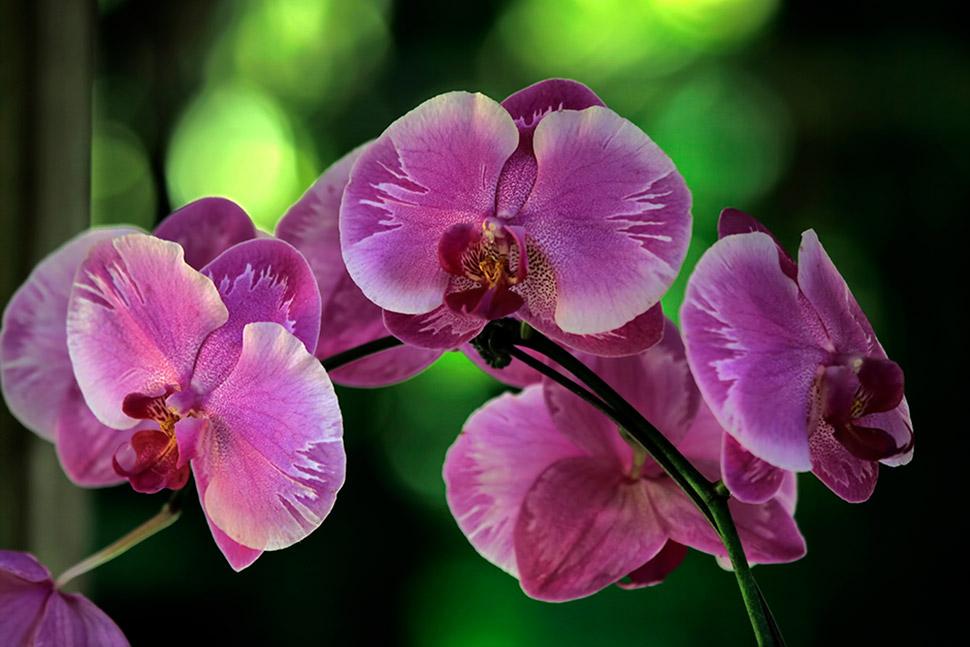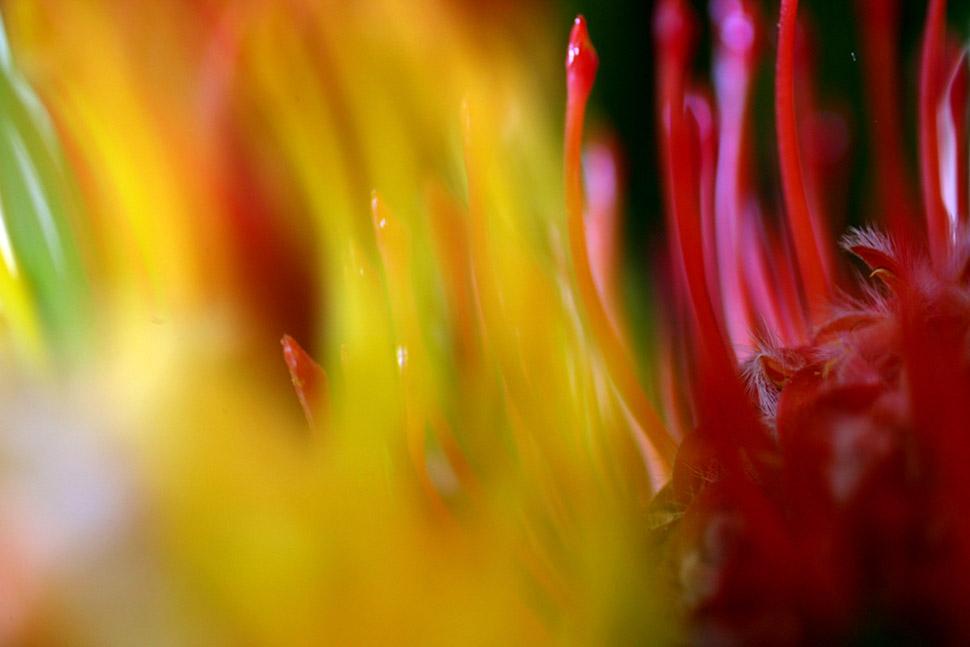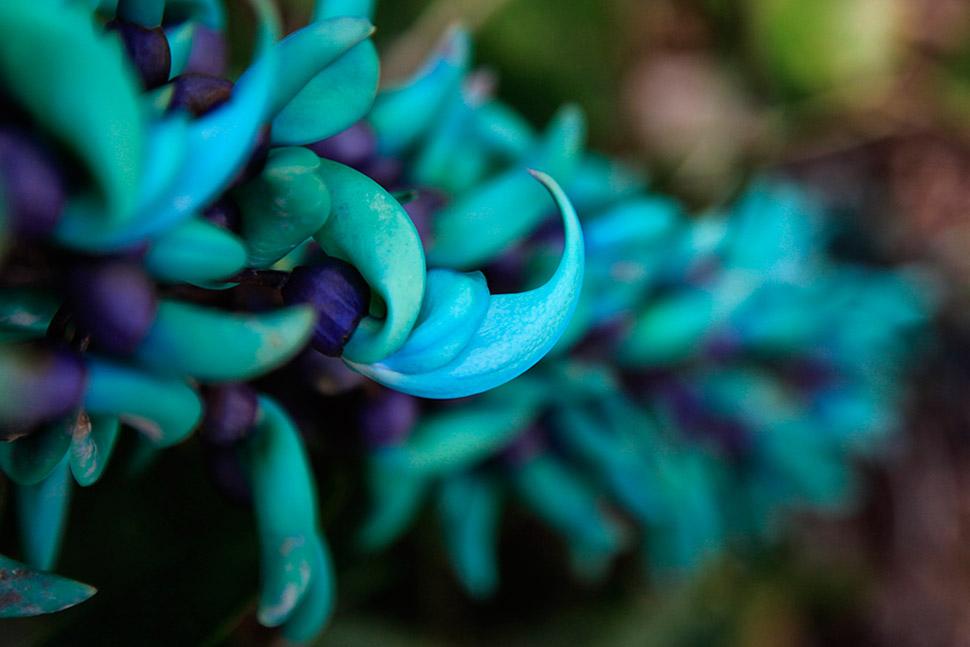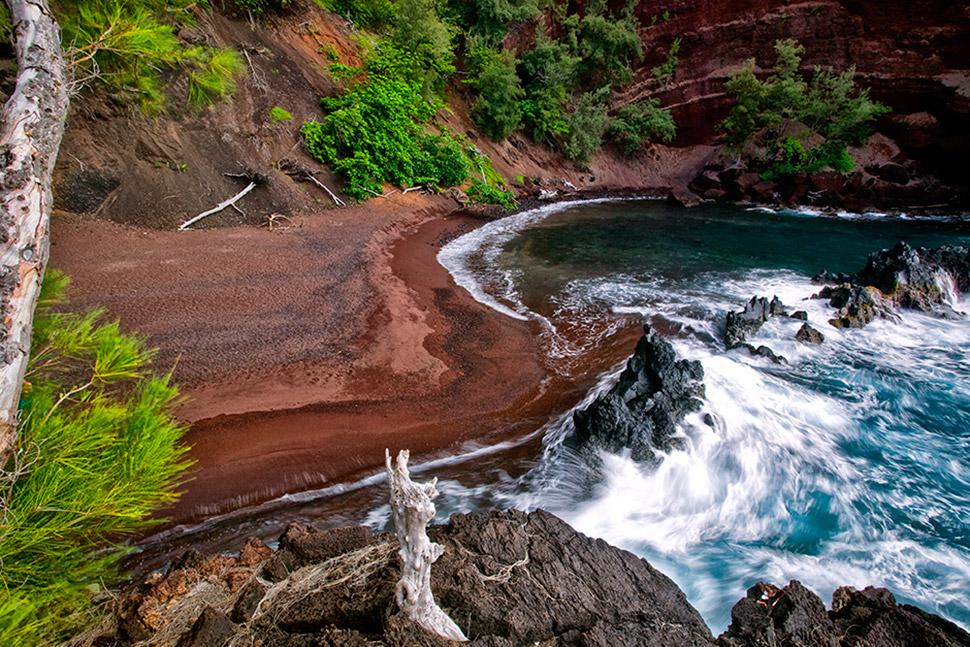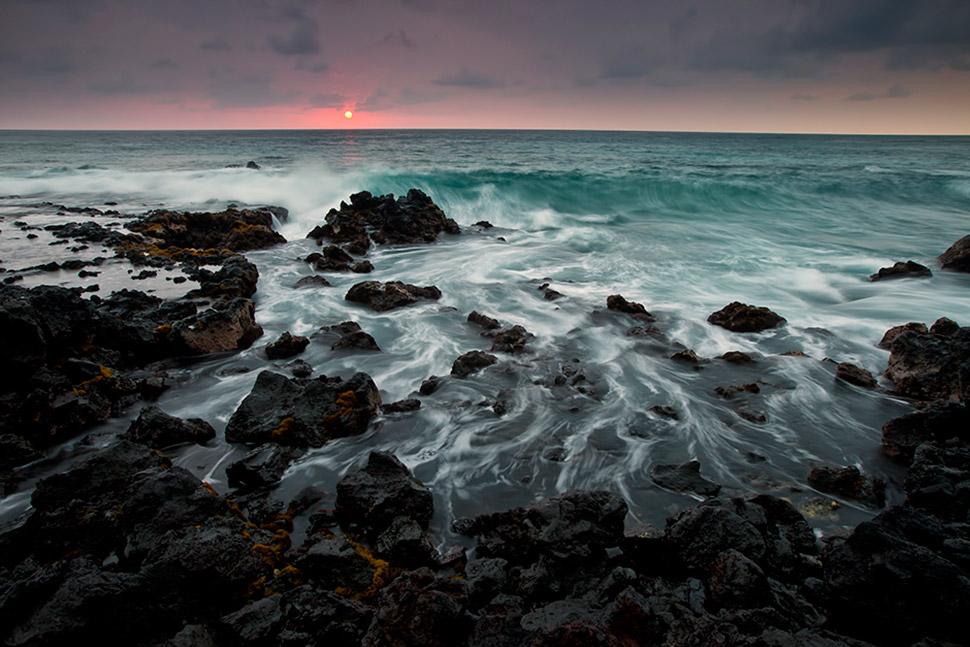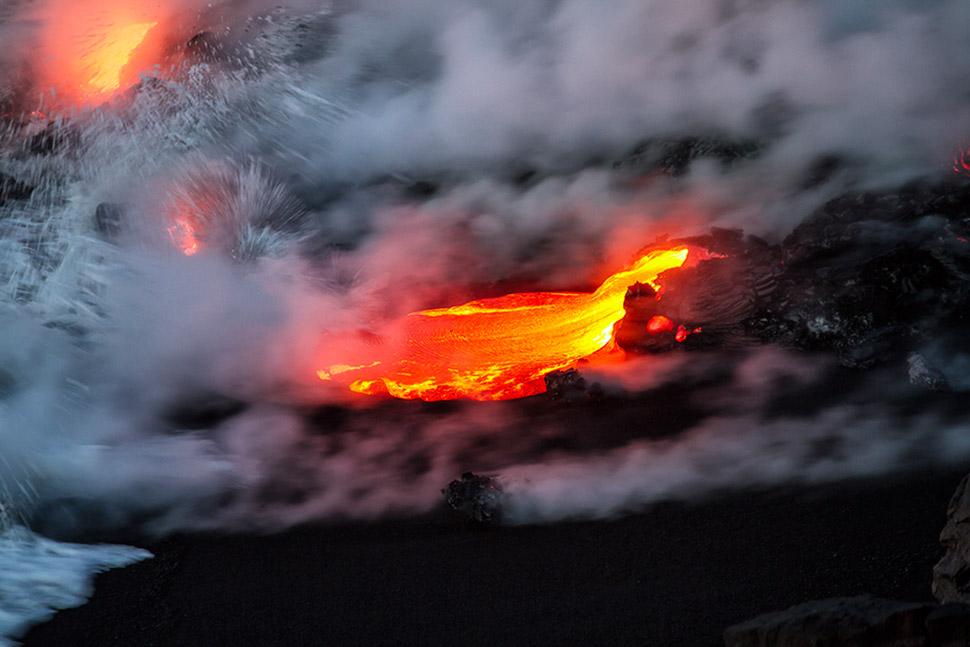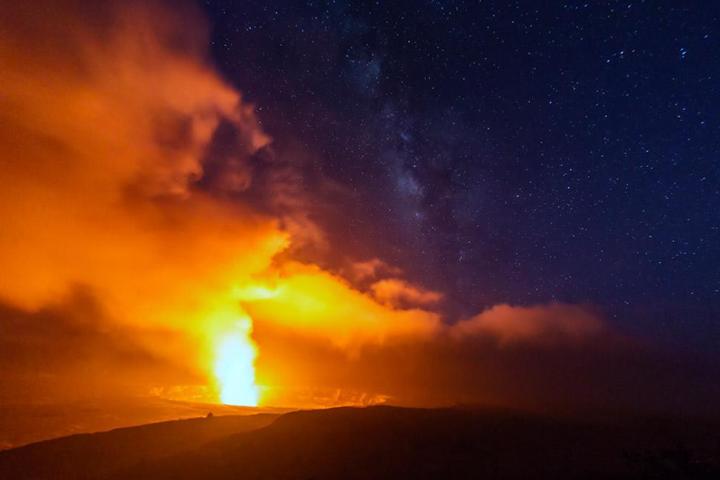
If you stare at Scott Mead’s work long enough, you might think you’d gone on vacation somehow. His photography of lush landscapes and beautiful sunsets of his adopted home of Maui create that relaxing feeling you’d expect from a Hawaiian holiday. “For me the biggest thing is all the plant life, the sunsets, everything that Hawaii has to offer, including its culture, the people – my thing is to take and capture those wonderful little moments in time, that’s what I want to do,” said Mead.
“My thing is to take and capture those wonderful little moments in time, that’s what I want to do.”
Don’t let his photographs’ serenity fool you. Mead faces many challenges in trying to capture the Maui landscape, including unpredictable weather and wobbly terrain, which he then prints on the best papers like Hahnemüle bamboo to create fine art. When he’s not out shooting, Mead runs photography workshops where he teaches his students how to photograph everything from flowers to whales.
Mead set aside some time – Mai Tai in hand – to talk to us about his photography career and how to capture those beautiful but hard-to-shoot sunsets.
Scott, you’re known as a nature and landscape fine art photographer today, but before that you were shooting muscle cars. Tell us a bit about that past life.
My father was really big into sports cars, so we used to go to races and car shows. I always had a camera with me and I was always taking shots. I would take my photos with me and show them to people, and there were some car clubs that were interested, so I started giving away the images for them to utilize. A friend suggested I try to get in with the local paper – just send them a query letter and send them a couple samples and go from there. The next thing you know, they said, “we want to buy these, and can you do this on a weekly basis?” That got me jump started in the automotive side.

Which led to gigs with Edmunds.com and Motor Trend. That must have been fun.
Back in those days there weren’t many of us that did multiple duty, where we would be driving the cars, evaluating them, testing them, writing about it, and also taking the images, so from a dollar standpoint Motor Trend was getting a screaming deal, but I was having the absolute time of my life.
But you decided to leave this awesome career testing, photographing, and writing about the newest cars – that’s every guy’s dream job. Were you feeling OK?
“We sold the house, sold everything we needed to, and we moved.”
Working in Hawaii doesn’t sound like a bad career move, but what drew you there? Why the switch to landscape photography?
The landscape photography thing was always there, but it was underlying. [When I was younger] my grandparents had bought a couple condos over here in Maui, and I started coming every single year for the summer to visit. A lot of it for me were just the different things you saw through the camera. It was my view of the world here on Maui: the sunsets, going to luaus, the beach, things like that.
Whenever I was coming over to Maui, I would bring over a brick of film and within three days I’d be through 40 rolls of Velvia, and I’d be calling A&I [photo in Los Angeles] or some other place and say, OK, I need you to send me another brick FedEx. I was shooting like mad, [but the interest in landscape photography] was always there.
Your grandfather was who introduced you to photography, right?
He was sort of the catalyst. On my very first trip [to Maui] my grandfather gave me a little Kodak Instamatic camera, a handful of 126 film cartridges, and told me to go have fun. The long and short of it is, I’ve been having fun with photography ever since. In fact, a few months ago, I was rummaging through some of my old files and came across (a photo) where you can kind of make out a waterfall, but rest is a great shot of the back of my mom’s head!
It was just a fun thing for me until I got into college. In order for me to graduate I had to have a photography class. I thought, OK, I’m going to get this done the first quarter that I’m here, sail through, get all my requirements done, and graduate. Well, I fell in love with the dark room, and I took every single class that the college offered and I ended up being the lab tech for three years.
You grew up on film. Tell us about your first digital experience?
“I got one of the first Nikon Coolpix 990s right before the L.A. Auto Show.”
What’s your gear setup now?
The most important thing is my tripod. Good sticks and a good head are the basis for about 95 percent of my shots. The only time I’m not using a tripod is those days when I’m out on the boat and I’m shooting the Pacific humpback whales. Love my Gitzo G2228, which is amazing because all three legs are independently articulating from 0 to 90 degrees. Besides the tripod, I would go nuts without my Acratech GV2. Because of all the sand and the grit and things like that we typically have shooting in the Hawaiian Islands, ball heads don’t last. The GV2 is essentially exposed; as soon as I’m done with the shoot I will rinse it under water and it’s good to go.
The Canon EOS 5D Mark III is my primary body, but I’ve also got an EOS 7D, an EOS 5D Mark II, and a 1D Mark III. The camera lenses, those are your tools. The main lens I’m using, especially for sunsets and things like that, is Canon’s 16-35mm f/2.8L lens. That thing is just incredibly sharp and I can get the whole scene – it’s my go-to lens for landscaping, and it’s just fantastic. My new favorite is Sigma’s 72-200mm f/2.8, which I’m finding is just spectacular when it comes to just locking on the subject for focusing.
I have an old Canon PowerShot G10 that I keep in an underwater housing. If whales decide to play underneath the boat I’ll dip it underwater and shoot like mad, trying to capture them “dancing.”

The other thing is – let’s just go ahead and call it a back-saver – is my Lowepro Pro Trekker 400 AW. When you’re out hiking, especially over lava where nothing’s flat, keeping all your gear properly balanced on your back is key, and this pack is just absolutely amazing.
What are some of the challenges in your work? Any near-death experiences?
Probably the biggest challenge is how fast the atmosphere conditions turn here on the Islands. The other thing, too, is we’re surrounded by ocean so there’s typically a lot of salt in the air – the breeze is always blowing so there’s fine dust. You have all these different conditions – and changing so fast – that you really have to be on top of what that is doing, and what the light is doing, and be prepared for anything.
I’m really fastidious as far as keeping my gear clean. As soon as I come back from a shoot, the first thing I do is I clean everything off whether I used it or not. As long as you take good care of your equipment, you’ll be fine. I think one of the biggest no-nos that I see happen is people would be out on the beach, trying to get a sunset and the wind’s blowing – so you’ve got the salt, the sand, things like that – and they’re changing lenses.
There was one dangerous situation that sticks out in my mind. I was over on the Big Island a few years ago shooting Kilauea that was erupting, and as I was hiking out I came to what’s called a skylight – basically in a lava tube that has a crack in the top, and you can actually see the lava flowing through it. And in my exuberance to photograph this skylight I walked almost right up to it and I’m standing there, totally forgetting that lava doesn’t flow like water. It’s really viscous, and it flows in waves. Next thing I know, the ground around me starts glowing and melted the soles of my boots a little bit. You bet I got out of there quick. I learned my lesson; you’ve got to be cautious around Madame Pele, and respectful at all times.
Sunset scenes are one of your specialties. How does one go about shooting them without having them look blown out or underexposed?
The most important thing is to understand that how we view a sunset is totally different from how a camera views it. Our eyes see between 10 to 11 stops of light, and our aperture, if you will, is always adjusting. The camera sees 6 plus or minus, depending on the model. So while we can see all the shadows and everything, and not blow out the highlights, the camera, no way, that’s not going to happen. While I mostly use split neutral density filters to balance the light in-camera, one new way is high dynamic range (HDR) imagery, and there are several cameras out there now that will do HDR in-camera; the key is to make sure the camera is on a real sturdy tripod because if you move it’s difficult for a camera to line things up.
For people who are utilizing point and shoots, find a scene where you have something that is static – beach in the foreground, lava rocks, and a couple of palm trees, and put those off to one side to anchor the image. When it comes to sunsets I find they tend to shoot a little bit toward the hot side. If you can pull that back by half or even one [exposure value] stop, it really makes a big difference.

The biggest mistake is using a flash – it will throw the exposure and everything off. Now, however, if there is a rock with a crab on it at about a foot-and-a-half in front of you, then you definitely want the flash because then you’re going be able to highlight that and it’s not going to blow out from the sun.
What do you find most rewarding about your job?
When someone takes a look at your image and, all of a sudden, they fall in love with it, it really strikes a chord. The other thing, too, is just being out in nature here. We’re really lucky here on Maui: Of the 13 climate zones the world has, we have 11 of those. There is so much diversity it just blows your mind with the things you’ll see day to day. Just being able to see the most spectacular sunset ever is just amazing; and two nights later it’s even better than that. It’s like this reward that you keep getting almost night after night after night.
(images © Scott Mead Photography)
